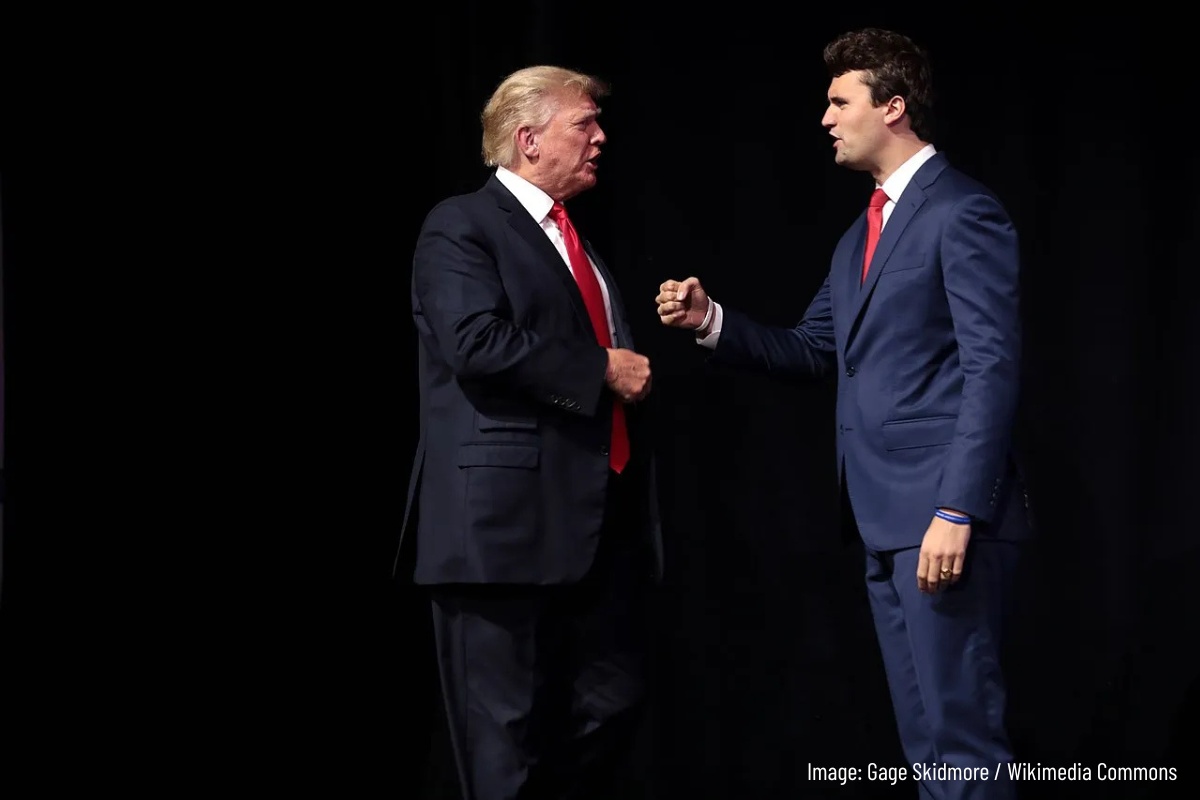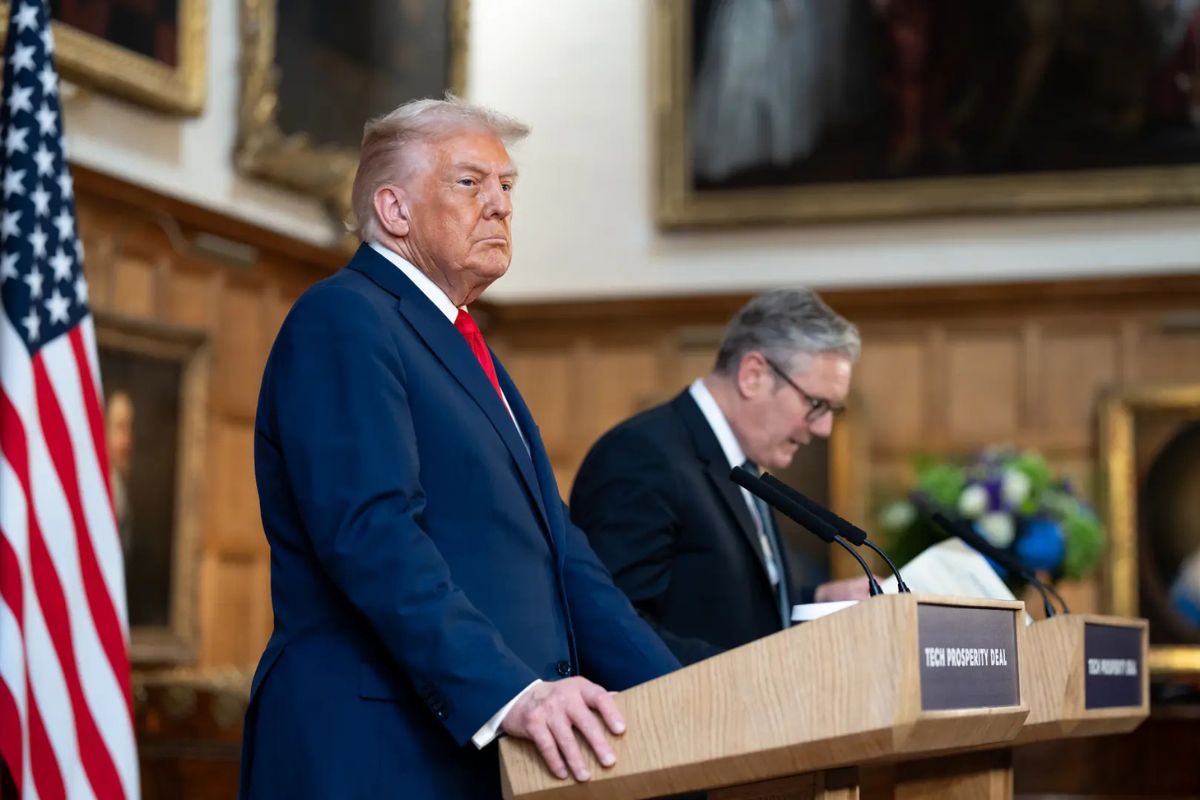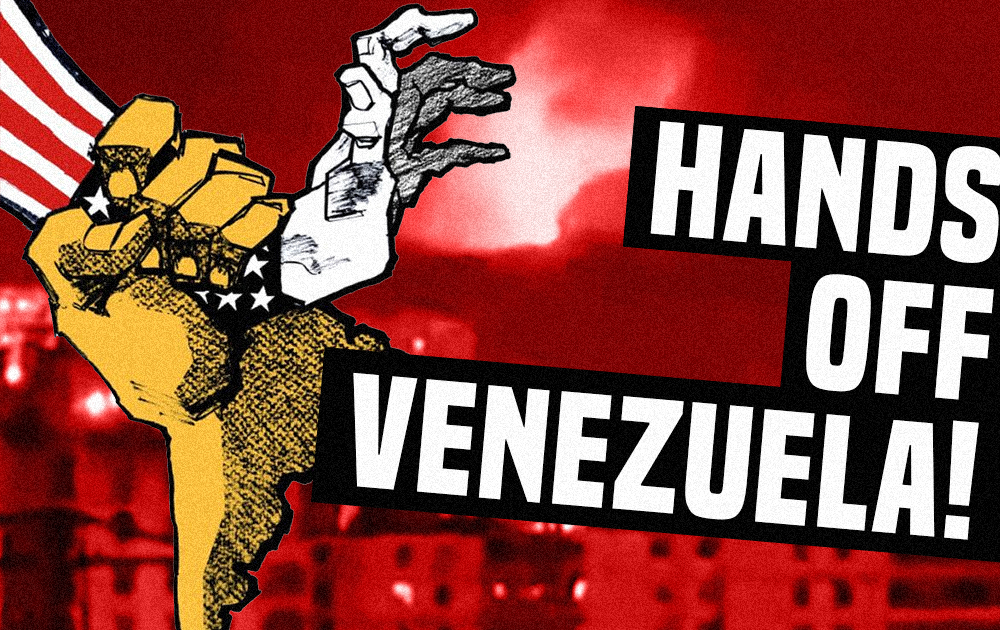If it is enough to arm oneself with a pistol in order to achieve one’s goal, why the efforts of the class struggle? If a thimbleful of gunpowder and a little chunk of lead is enough to shoot the enemy through the neck, what need is there for a class organization?
—Leon Trotsky, “Why Marxists Oppose Individual Terrorism”
The killing of Charlie Kirk, MAGA’s most influential evangelist to conservative American youth, has sent a shockwave through the political landscape. Trump, who credited Kirk for helping him win the 2024 election, was the first to confirm the news of Kirk’s death. Today, he announced that Kirk will be posthumously awarded the Presidential Medal of Freedom.
Kirk was a vile, bigoted reactionary. Communists stand against everything he stood for. We do not mourn his death. But we must state clearly that this act will have reactionary consequences.
Prior to the shooting, the MAGA movement was beginning to fracture along class lines. Working-class Trump voters were becoming disillusioned with the president’s broken promises, his inability to improve the economy, his role in covering up the Jeffrey Epstein scandal, and more. Trump’s base now has a martyr to rally around. Far from raising working-class consciousness, Kirk’s assassination will inflame the culture-war divisions that reactionaries like Trump feed on.
A “casualty” of the culture war
The public setting of his assassination made for a dramatic scene. Utah Valley University was the first stop on a cross-country tour of ten universities planned by Kirk’s campus organization, Turning Point USA, which claims a presence on 3,500 high school and college campuses. While speaking to an outdoor crowd of several thousand students, he was shot through the neck from 200 yards.
At the time of writing, the shooter has neither been caught nor publicly identified, although the FBI has circulated photos of a person of interest in the manhunt.
He appeared to time his shot deliberately. Twenty minutes into the event, during a “Prove Me Wrong” public debate segment, a student approached the microphone to challenge Kirk over the country’s epidemic of mass shootings.
Kirk characterized mass shootings as part of a “spiritual war” by transgender people against Christianity. This has become a culture war talking point after a shooting at a Minneapolis Catholic school last month, with Trump’s Justice Department even considering banning trans people from owning guns.
“Do you know how many transgender Americans have been mass shooters over the last ten years?” the student asked. Kirk elicited applause from the crowd with a cynical deflection: “Too many.”

The questioner followed up: “Do you know how many mass shooters there have been in America over the last ten years?”
“Counting or not counting gang violence?” Kirk asked, before being struck by the fatal gunshot.
The topic of gun violence was a familiar one for Kirk, who spent countless hours on his daily podcast dishing out chauvinist and racist rants about topics like “gender ideology” and “Black violence.” In his final podcast episode, published the day before he was killed, Kirk dedicated an entire segment to “Black-on-white crime,” claiming that George Floyd died of an overdose and that “not enough of them [Black men] have been arrested.”
Steve Bannon, another leading MAGA ideologue, was broadcasting a live show on his daily podcast, “The War Room,” when news of the shooting broke. He immediately struck a combative tone: “We have to have steely resolve. Charlie Kirk is a casualty of war. We’re at war in this country.”
His guest, Jack Posobiec, who frequently refers to people on the left as “unhumans,” drew a parallel to Luigi Mangione, the alleged assassin of a UnitedHealth executive last December: “You get MAGA or you get Mangione. And the Mangiones are now taking out the MAGAs … This is what you have done to our country. And what comes next is on you, too.”
A rallying cry for MAGA
On the night of the shooting, though authorities still hadn’t identified a suspect or motive, Trump recorded a video statement from the Oval Office denouncing “radical-left political violence.”
The president tied Kirk’s killing to the attempt on his own life in Butler, Pennsylvania, last year, as well as to the assassination of Brian Thompson. He ended with a vow to find “each and every one of those who contributed to this atrocity and to other political violence, including the organizations that fund it and support it.”
Other figures on the right immediately struck the same note. Fox News host Jesse Watters said:
“It’s happening. You’ve got trans shooters, you’ve got riots in L.A. They are at war with us, whether we want to accept it or not, they are at war with us. And what are we going to do about it? How much political violence are we going to tolerate? … We’re sick, we’re sad, we’re angry, and we’re resolute, and we’re going to avenge Charlie’s death in the way Charlie would want it to be avenged.”
Right-wing author Matt Forney posted, “It is time for a complete crackdown on the left. Every Democratic politician must be arrested and the party banned.” Elon Musk posted, “The Left is the party of murder.” Andrew Tate posted just two words: “Civil war.”
The immediate effect of Kirk’s assassination is clear. It has united the American far right around their rage and reinforced the sentiment that they are under siege. This is the same message at the heart of the propaganda that TPUSA has been spreading on campuses for years: It’s conservatives who are the rebels standing against the powers that be, and the “left”—a term meant to conflate liberals, the media, the political establishment, and even billionaires—will do everything in their power to stop them.
From the perspective of any of the Utah Valley Kirk supporters who showed up to watch him speak, yesterday’s events undoubtedly bolstered this sentiment. Rather than weakening their confidence in Trumpism, it has hardened their conviction that they are part of a righteous movement standing against a powerful, violent enemy.
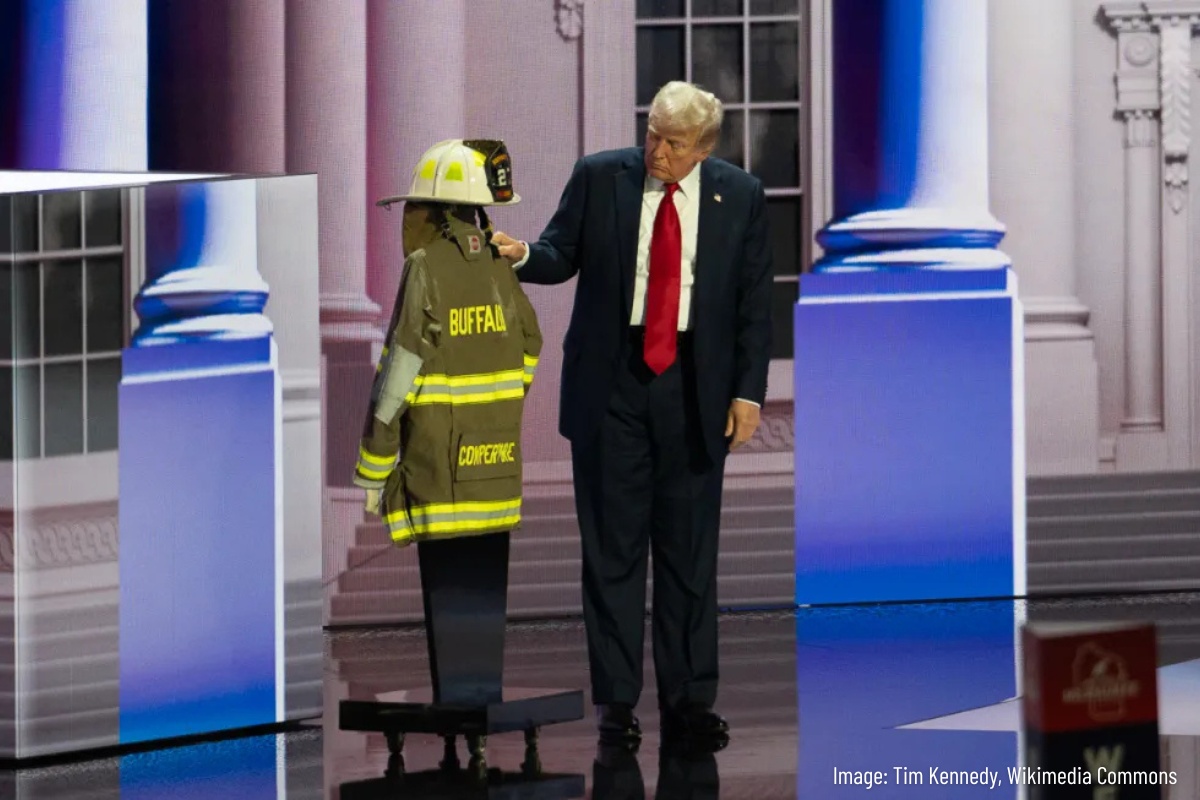
After the failed attempt to assassinate Trump last year in Butler, we warned of the counterproductive consequences that would flow from such a scenario:
“It’s not hard to imagine what the reaction of Trump’s base would have been if the sniper’s bullet had hit its target. It would likely have ignited a social explosion of rioting and violent rampaging against anyone perceived to be “the other side.”
“Communists naturally oppose Donald Trump. But it is clear that any outcome from an attempt to assassinate him results in a thoroughly reactionary development—one that does nothing to clarify the class division that runs through society, including through the camp of Trumpism itself.
“The majority of Trump’s base of support consists of workers who have been temporarily duped into believing in his demagogy. Our task is to sharpen the class line in society and bring the interests of the entire working class to the forefront, showing workers that their common enemy is the capitalist class, not another segment of the working class. On this basis, Trump’s base could be split along class lines.”
Just as the Butler incident gave Trump enormous momentum in the lead-up to last year’s election, Kirk’s martyrdom will be cynically used to unify the right. Trump may also use it to step up repression against his political opponents.
But as we have explained many times, his base is not a homogeneous bloc marching steadily toward a fascist takeover. Rather, it is an unstable electoral alliance destined to fall apart under the impact of the grinding capitalist crisis. Culture-war demagogy can keep the coalition together for a time, but it’s no match for the daily hammerblows of a system in decline.
Where is MAGA going?
Until now, the breakup of Trump’s coalition along class lines was proceeding apace, particularly among the youth. A CBS poll at the end of July revealed a 54-point net negative swing in Trump’s approval rating among voters under 30 years old. From a 55% approval and 45% disapproval rating in February, only 28% now approved—a 44-point drop—while 72% disapproved.
In addition to MAGA divisions over Trump’s tariffs, a raging debate over whether “America first” means backing NATO’s proxy war in Ukraine and Israel’s genocide, and outrage over Trump’s U-turn on releasing the Epstein files, the decisive factor that could tear Trumpism apart is the economy. Inflation and debt are rising, while unemployment claims just surged to their highest level in four years.
On Tuesday, the Bureau of Labor Statistics reported that 911,000 fewer jobs were created over the past year than was previously reported. An economist from Inflation Insights called the revision “worse than any figure, preliminary or final, seen since at least 2000.”
This comes at a time when the crisis of American capitalism is undermining the unholy cross-class alliance of Trumpism, and a record 70% of the US population says they have no faith in the American dream. Although the storm of outrage won’t last forever, Kirk’s assassination has forcefully pushed all that into the background. In its place, the culture war has returned to the forefront with renewed vigor. That’s why the assassination is a step backward, not forward, in the class struggle.
Communists understand that MAGA cannot be defeated by the liberal establishment—much less through acts of political terror. It can only be defeated by building a class-based alternative capable of tapping into and winning over the healthy class discontent that Trump has cynically manipulated. This requires an organized force with a fighting program for good jobs, higher wages, universal housing, healthcare, and education, and a class-independent stance against both ruling-class parties. Our aim is not to murder or silence our opponents, but to politically expose them in the eyes of the working class, in order to build a party that represents the interests of the majority.
The ruling class is to blame for violence
Politicians of both parties are joining hands in a moral condemnation of political violence, using language that has become sickeningly predictable. Just about every major political figure has posted a statement with some variant of the words “political violence has no place in our country.”
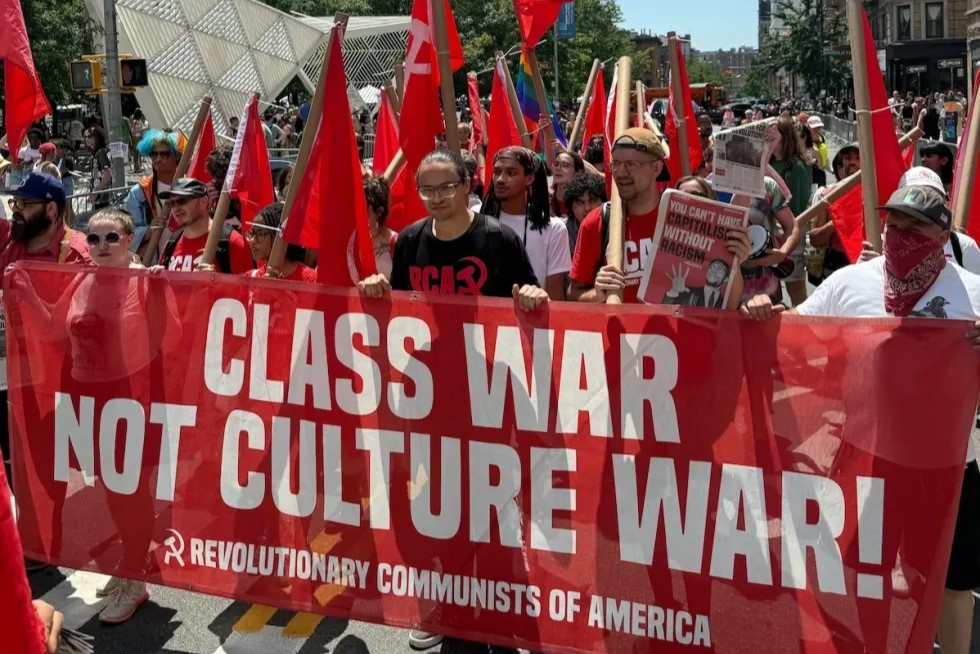
Yet it’s clear for all to see that political violence has become extremely common. Since last summer, there have been two attempts on Trump’s life, two shootings of Democratic state legislators in Minnesota, and a firebombing of the Pennsylvania governor’s home.
Elected officials aren’t the only ones who have been targeted. Last month, a 30-year old man opposed to Covid vaccines opened fire at the CDC headquarters in Atlanta, killing a police officer. In July, a 27-year-old man killed four people, including a Blackstone executive, at a Manhattan office building. He’d intended to target National Football League executives, based in the same building, as a protest against football-related brain injuries.
“Violence against political figures was once the sort of thing that happened in unstable democracies far away,” wrote Reid Epstein of the New York Times, “Now it is a fact of life in America, like the school shootings that once shocked the national conscience.
These are symptoms of a declining society, one full of people with no hope or confidence that they can effect change through “normal channels.”
The fact is, American capitalism has a long history of violence from its very beginning. However, if political violence has become part of the American fabric, the class ruling over this system is to blame. No system is more violent than capitalism, and no ruling class has more blood on its hands than the American ruling class, which has directly or indirectly killed tens of millions of people worldwide, and which is directly funding the extermination of the population of Gaza to this day.
The working class is the one force in history with an interest in putting an end to political violence—and the strength to do so. But uniting this class requires that the culture-war divisions be replaced with a clear, class-struggle program.

